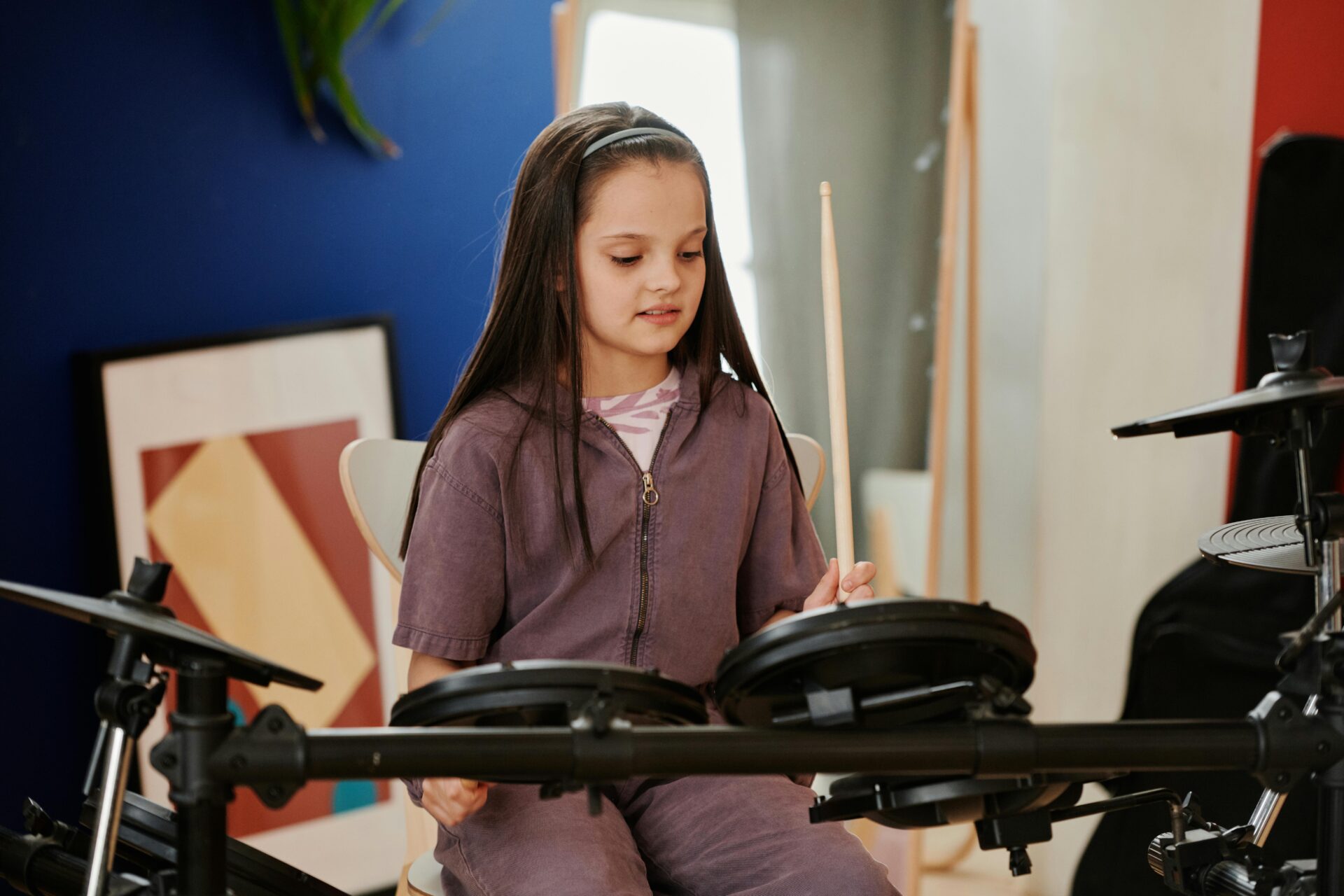When a child starts learning the drums, it’s more than just picking up a pair of sticks. It’s a chance to build confidence, rhythm, and creativity. But to truly support their growth, having the right practice space at home makes all the difference.
Whether your young drummer is just getting started or already working through more advanced techniques, the environment they practice in can help fuel their passion and progress.
Choosing the Right Location
The first step in setting up a home drum space is finding the right location. Look for a spot in the house that gives your drummer enough room to move around the kit comfortably. A spare bedroom, finished basement, or even a section of the garage can all work well. You want a place that provides a bit of privacy and reduces distractions, but also allows you to check in easily.
Sound levels can be a concern, so consider how close the space is to shared living areas. While drums are naturally loud, placing them in a more isolated part of the home can help keep the peace during practice sessions.
Acoustic Considerations and Sound Control
Drums are one of the loudest instruments, and that can be a challenge in a home setting. Fortunately, there are ways to manage sound without sacrificing practice time. If your child is playing an acoustic kit, you can add foam panels or rugs to absorb sound and reduce echo. Heavy curtains, carpets, and even furniture help soften the acoustics and prevent the sound from bouncing around too much.
For families concerned about noise levels, an electronic drum kit is a great option. These kits allow drummers to use headphones while still practicing technique, timing, and coordination. Many electronic kits even come with built-in metronomes and play-along tracks, which can be especially helpful for younger students.
Setting Up the Drum Kit
Once you’ve picked a space, it’s time to set up the drum kit! Whether your child is using a full acoustic set or a compact electronic kit, comfort and ergonomics matter. Make sure the seat height allows for proper posture and that the drums and cymbals are within easy reach. An uncomfortable setup can lead to poor habits or even injuries over time.
It’s also important to secure everything in place. A slipping hi-hat or sliding bass drum pedal can turn practice into frustration. Use a drum rug or mat to keep everything steady and protect the floor at the same time.
Adding the Right Tools for Practice
Young drummers benefit from having tools nearby that support learning and development. A metronome helps build timing and consistency, which are key skills for any drummer. Many young players also enjoy using practice pads to quietly work on stick control and rudiments.
Keep extra sticks, sheet music, and notebooks within reach. A music stand or tablet holder can be helpful for following along with lessons or reading music. You might also consider a simple recording setup so your child can listen back to their playing and track their progress.
Whether your child is just starting or already jamming to their favorite songs, our team at The Music Workshop can help guide their progress and passion. Our experienced instructors offer personalized drum lessons and advice on how to make the most out of home practice. Get in touch with us today to learn how we can help your young drummer thrive!


